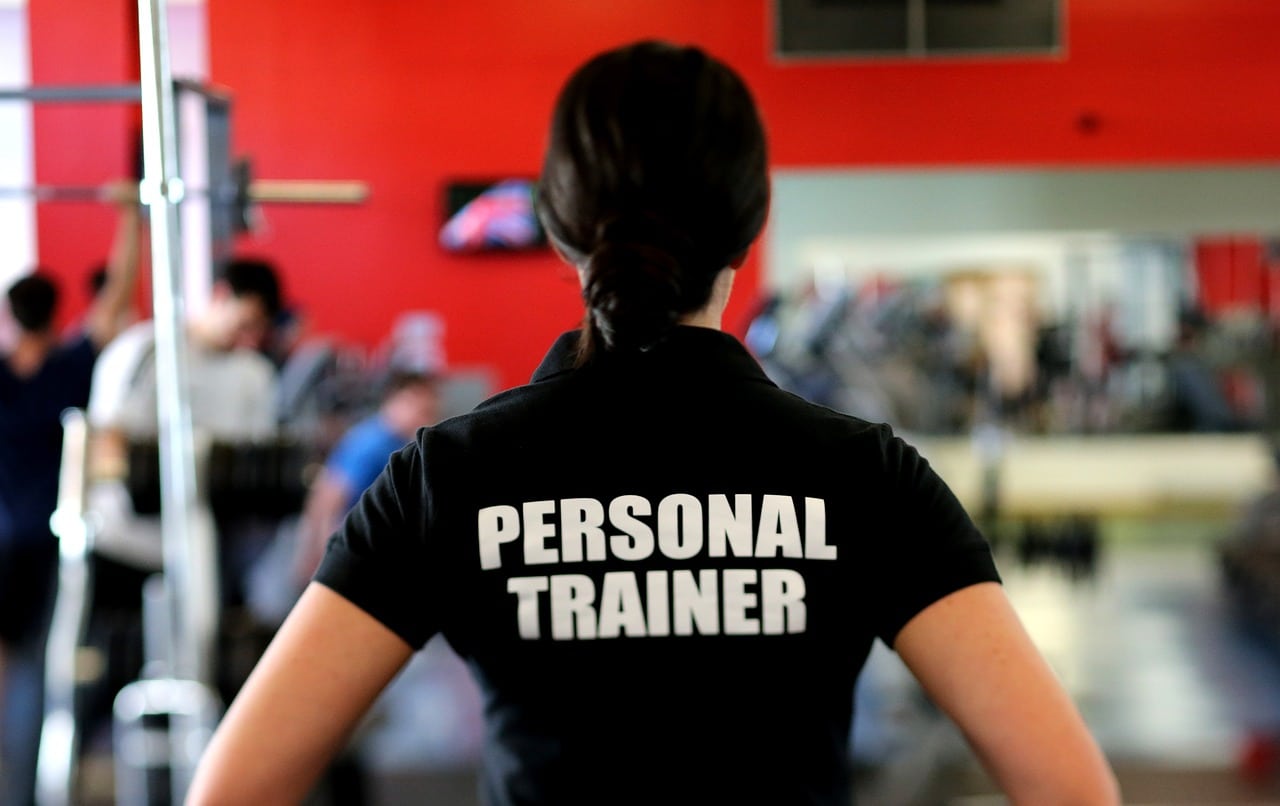There’s an art to managing your client’s exercise intensity.
Push too hard, and they’ll cut the session short out of frustration—and never return. Push too little, on the other hand, and your client will fail to make the necessary physiological adaptations (both cardiovascular and muscular) needed to achieve their fitness goals.
To make things more complicated, you can’t simply look at intensity on a “session-by-session” basis.
You need to take on a high-level view of your client’s exercise intensity spanning weeks, or possibly months, to ensure they’re training in a way that gives their body the time it needs to repair and recover.
Even after you’ve developed a suitable workout program for your client, how do you know—for sure—if they’re exercising at the intended intensity?
Answer: By measuring their workout intensity. This article shows you how.
What Is Exercise Intensity?
First things first. Let’s cover the basics of exercise intensity.
In the strictest sense, exercise intensity is defined by the amount of energy required to perform the physical activity per unit of time.
In general, though, the easier way to think of (and explain) the concept of intensity is a measure of how hard the body is working during physical activity. Exercise intensity is usually measured as low, moderate, or vigorous. Here are a few examples of each:
- ¨ Low-intensity exercise: Walking slowly, riding a bike, lifting light weights
- ¨ Moderate-intensity exercise: Hiking, brisk walking, biking, water aerobics
- ¨ Vigorous-intensity exercise: Running, swimming, jumping rope
Is More Intensity Always Better?
To answer the question: Not at all.
In addition to recovery and injury concerns, there’s also the fact that there’s no one-size-fits-all intensity prescription. How hard you make your client go will depend on several factors, including their fitness goals, how they like to work out, how their body feels, etc.
A general rule of thumb is that you shouldn’t be having your client do more than two to three high-intensity workouts per week.

Grow Your Income and Impact as a Personal Trainer and Board-Certified Health Coach
How to Measure Exercise Intensity
Here are the ways to measure your client’s exercise intensity—in the order of least accessible to most accessible.
Oxygen Consumption
In exercise physiology, oxygen consumption is the golden standard for measuring exercise intensity during aerobic (i.e., “needs oxygen”) exercise.
The higher the oxygen demand during a particular session, the higher the intensity. That said, this measure of exercise intensity isn’t practical.
In addition to having access to a medical facility or a lab, you’ll also need to get your client to perform the exercise while breathing into a mouthpiece that collects information on inspired and expired air. You can treat this information as “nice to know.”
Heart Rate
A more accessible way of measuring your client’s exercise intensity is by looking at their heart rate (e.g., if they’re wearing a fitness tracker or smartwatch).
Given the body would consume more oxygen as intensity increases, that’d also meant that, in general, the higher your client’s heart rate, the more they’re challenging themselves. More specifically, you can track and guide your client’s exercise intensity by calculating their Target Heart Rate (THR) range:
- ¨ Moderate-intensity physical activity: Your client’s target heart rate should be between 64% and 76% of their maximum heart rate.
- ¨ Vigorous-intensity physical activity: Your client’s target heart rate should be between 77% and 93% of their maximum heart rate.
That’s great. But how would you know what your client’s maximum heart rate is? Well, there’s a classic formula (i.e., the “Fox formula”) you can use for that: Simply subtract your client’s age from 220.
For example, for a 35-year-old client, their estimated maximum age-related heart rate would be calculated as 220 – 35 = 185 beats per minute (bpm). Putting it all together, that means you’d want your client’s heart rate to remain within the range of:
- ¨ 118 to 140 bpm for moderate-intensity physical activity (185 x 0.64 and 185 X 0.76)
- ¨ 142 to 172 bpm for vigorous-intensity physical activity (185 X 0.77 and 185 X 0.93)
Drawbacks to Using Heart Rate
That said, there are a few drawbacks related to using heart rate as a measure of your client’s intensity.
The first is that, as with most formulas used in fitness, the Fox formula isn’t all that accurate. In fact, research shows that using the formula to calculate heart rate could give you numbers that are way off—maybe by as much as 12 bpm up or down. That’s a huge gap.
What about other formulas? Are they better?
Well, not exactly. Other formulas used for calculating the maximum heart rate, including the HUNT and Tanaka formulas, are prone to overestimating the maximum heart rate for women.
In the worst-case scenario, you could end up pushing your client dangerously close to their actual maximum heart rate—while still believing that they’re squarely in the “moderate-intensity” zone.
Another con associated with relying on heart rate as a measure of intensity is that it fails to consider the many variables that can raise or lower your client’s readings on any given day.
For example:
- ¨ Sleep: Studies show that a lack of sleep, a reality that many adults worldwide struggle with, will elevate the heart rate by 5 to 10 bpm.
- ¨ Stress: High-stress levels can cause a fast heartbeat or heart rate. This study, for instance, found that workplace stress can raise heart rates by 4 to 6 bpm.
- ¨ Weather: When your client exercises in cold environments, their heart rate may decrease (compared to their regular readings)—which can cause you to underestimate the actual intensity of their workout.
Lastly, you should also be aware that some medications (e.g., beta-blockers) can alter your client’s response to exercise. So, you should always advise your client to see their doctor for a medical check-up before tweaking their exercise intensity or even before starting them on a new routine.
Rate of Perceived Exertion
As mentioned earlier, because heart rate is an absolute number, it fails to capture how your client is truly feeling in that moment (e.g., level of fatigue).
Thankfully, there’s a better way to judge your client’s exercise intensity. Bonus: It also happens to be one of the most user-friendly ways to measure workout intensity. And it’s none other than something called the Rate of Perceived Exertion (RPE) scale.
The RPE scale ranges from 0 to 10, with 0 being resting and 10 being maximum effort.
So, the idea with the RPE scale is to regularly check in with your client—and get them to rate how hard they’re working on a scale of 0 to 10. To help you get a sense of what the numbers mean:
- ¨ 0 and 1: Basically being motionless
- ¨ 2 to 4: Low to moderate intensity
- ¨ 5 to 7: Moderate to hard intensity
- ¨ 8 and higher: Hard to vigorous intensity
- ¨ 10: Maximum capacity (your client can’t possibly push themselves any harder)
That said, do note that RPE can be tough to judge accurately when your client is new to exercise.
If they’re not familiar with how their body responds to exercise—in terms of how different intensity levels make them feel physically and mentally—then it’s hard to make an accurate assessment.
When You Should Use the Talk Test Instead
You could help a client new to fitness get a better grasp of what the RPE numbers look and feel like for them through something called the talk test.
With the talk test, all your client needs to do is pay attention to how breathless they are.
Here’s how their breathlessness “translates” into the RPE scale and, in turn, exercise intensity:
- ¨ Able to move and talk easily: 1 to 3; low intensity
- ¨ Talking starts to require effort but is still sustainable: 3 to 5; moderate intensity
- ¨ Talking gets uncomfortable: 5 to 7; high intensity
- ¨ Impossible to get out more than a word or two at a time: 7 to 9; approaching the maximum intensity
Drawbacks of RPE
Unfortunately, RPE’s greatest strength—i.e., subjectivity—also happens to be its weakness. That means your client’s perceived effort won’t always be an accurate representation of how hard their body’s actually working.
If they find a particular exercise (e.g., Bulgarian split squats) uncomfortable, they’ll probably give it a higher RPE rating even if their effort isn’t equal to that tolerance level.
Plus, other factors like whether your client enjoys a particular training method or workout routine and how well they tolerate discomfort can influence how hard a workout feels to them on any given day.
A good way to get around this would be to establish a “baseline” of your client’s tolerance.
For instance: Maybe they always rate power sled pulls as an eight on the RPE scale—even though you know the intensity corresponds to a moderate jog on the treadmill, which they report as a 5. In this case, you know that you can still afford to push up their intensity on the power sled pulls (at least just a little).
Repetitions in Reserve (RIR)
Thus far, all the intensity measurement methods we’ve mentioned are better suited for conditioning exercise. What if your client primarily does strength training?
Then you can use something called “Reps in Reserve” (RIR)—which refers to the number of reps your client has left in the tank after completing a working set. Or, in other words, how many reps they feel they could have done before reaching technical failure, where they’re unable to do another rep with proper form.
So, how would you know the ideal RIR for your client?
Well, based on research, there appears to be an effective—yet safe—RIR range for gaining muscle and strength: between 1 to 3 reps.
Studies show that this is a “sweet spot” of sorts. This is where your client would be able to train with the intensity needed for muscle hypertrophy without going to failure too often, which limits the total volume they can do in their workouts and increases their risk of sustaining injuries.
Meaning? You should have your client end most of their working sets 1 to 3 reps shy of failure.
That said, you should be extra careful when using this method of measuring exercise intensity with clients who’re new to strength training. That’s because beginner lifters tend to underestimate their true failure point—often by as much as five reps (or more).
Of course, there’s no better way to help your client familiarize themselves with their true failure point than to let them go to failure.
Just note that your top priority should always be safety (e.g., set up the safety bars on the squat rack in case they lose control).
Takeaway
While measuring your exercise intensity isn’t as straightforward or well-defined as it sounds, it’s still a great way to help your clients assess just how hard they’re training. This can be invaluable when they’re trying to track their progress.
For clients just starting out, remind them to view these exercise intensity measurements in a holistic way. Consider other factors, especially ones they can’t quantify such as stress levels, so they can better appreciate how everything is linked.
And most importantly, remember that many of these methods are subjective, which means arriving at more “accurate” measurements will take time and experience. So, they’ll need to be patient and keep practicing.

Grow Your Income and Impact as a Personal Trainer and Board-Certified Health Coach
References
- https://www.sciencedirect.com/science/article/pii/B9780323045254000484
- https://www.ncbi.nlm.nih.gov/pmc/articles/PMC3579386/
- https://www.cdc.gov/physicalactivity/basics/measuring/heartrate.htm
- https://www.ahajournals.org/doi/full/10.1161/01.HYP.27.6.1318
- https://www.ahajournals.org/doi/full/10.1161/01.hyp.35.4.880
- https://www.ncbi.nlm.nih.gov/pmc/articles/PMC6204981/
- https://www.ncbi.nlm.nih.gov/pmc/articles/PMC4961270/



